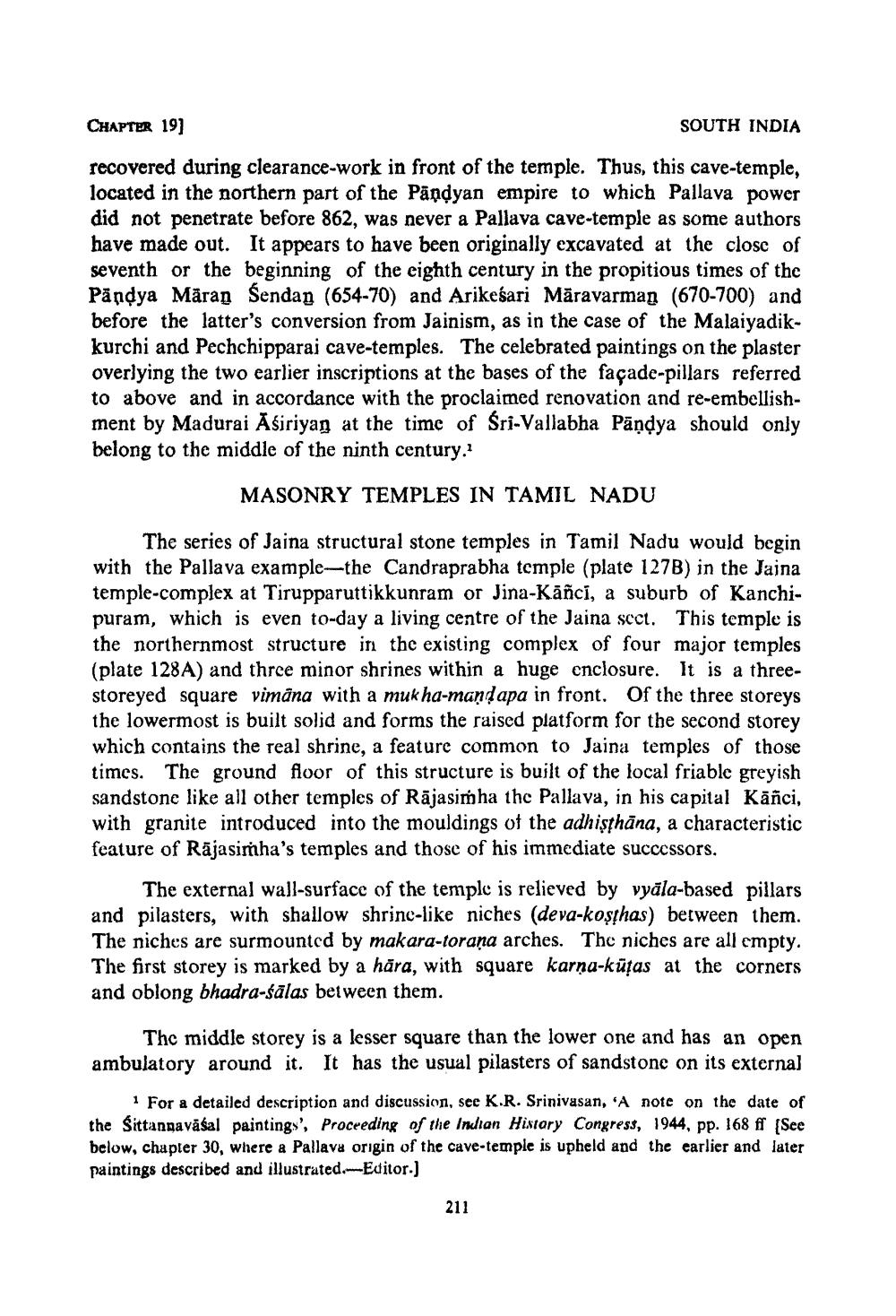________________
CHAPTER 19)
SOUTH INDIA
recovered during clearance-work in front of the temple. Thus, this cave-temple,
ted in the northern part of the Pāņdyan empire to which Pallava power did not penetrate before 862, was never a Pallava cave-temple as some authors have made out. It appears to have been originally excavated at the close of seventh or the beginning of the eighth century in the propitious times of the Pandya Mārap Sendan (654-70) and Arikeśari Māravarman (670-700) and before the latter's conversion from Jainism, as in the case of the Malaiyadikkurchi and Pechchipparai cave-temples. The celebrated paintings on the plaster overlying the two earlier inscriptions at the bases of the façade-pillars referred to above and in accordance with the proclaimed renovation and re-embellishment by Madurai Asiriyan at the time of Sri-Vallabha Pāndya should only belong to the middle of the ninth century.
MASONRY TEMPLES IN TAMIL NADU
The series of Jaina structural stone temples in Tamil Nadu would begin with the Pallava example--the Candraprabha temple (plate 127B) in the Jaina temple-complex at Tirupparuttikkunram or Jina-Kāñci, a suburb of Kanchipuram, which is even to-day a living centre of the Jaina scct. This temple is the northernmost structure in the existing complex of four major temples (plate 128A) and three minor shrines within a huge cnclosure. It is a threestoreyed square vimana with a mukha-mandapa in front. Of the three storeys the lowermost is built solid and forms the raised platform for the second storey which contains the real shrine, a feature common to Jaina temples of those times. The ground floor of this structure is built of the local friable greyish sandstone like all other temples of Rājasimha thc Pallava, in his capital Kāñci, with granite introduced into the mouldings of the adhisthāna, a characteristic feature of Rājasimha's temples and those of his immediate successors.
The external wall-surface of the temple is relieved by vyāla-based pillars and pilasters, with shallow shrine-like niches (deva-koşthas) between them. The niches are surmounted by makara-torana arches. The niches are all empty. The first storey is marked by a hāra, with square karņa-kūtas at the corners and oblong bhadra-sālas between them.
The middle storey is a lesser square than the lower one and has an open ambulatory around it. It has the usual pilasters of sandstone on its external
1 For a detailed description and discussion, see K.R. Srinivasan, 'A note on the date of the Sittangavāśal paintings', Proceeding of the Indian History Congress, 1944, pp. 168 ff (See below, chapter 30, where a Pallava origin of the cave-temple is upheld and the earlier and later paintings described and illustrated.Editor.)
211




